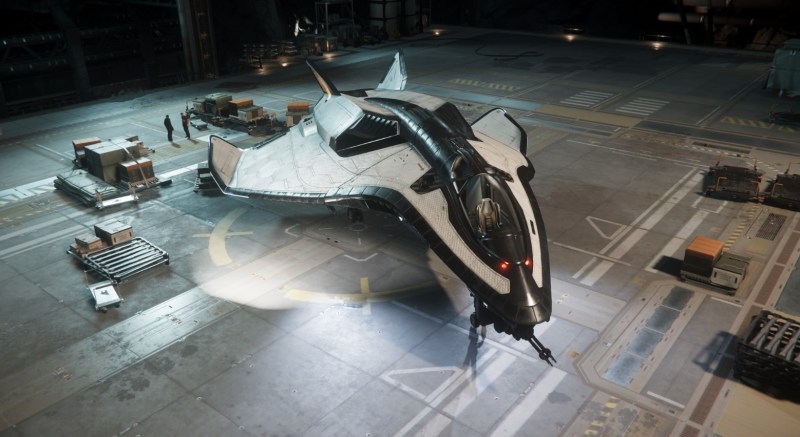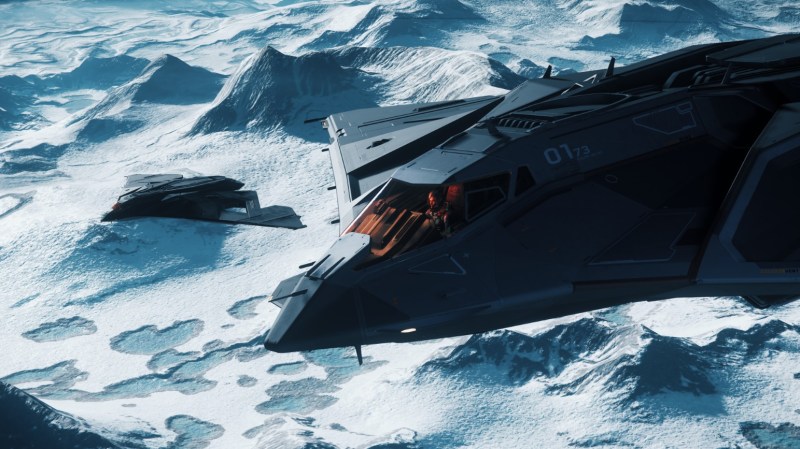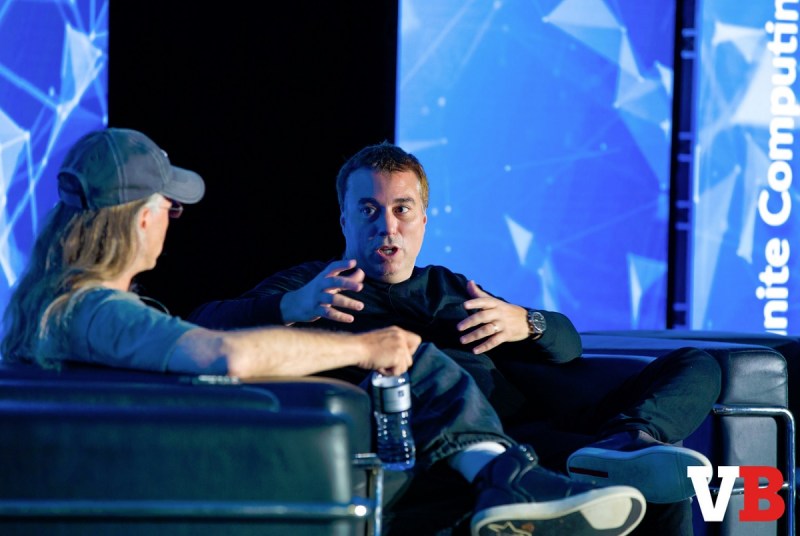
Above: Avenger Titan ship in Star Citizen.
GamesBeat: Another interesting thing amid all of this is you do have a launch window now. What sort of confidence goes into that setting that up for Squadron 42?
Roberts: [Laughs] We wouldn’t publish the road map if we didn’t feel pretty good about it. We spent a fair amount of time breaking all the remaining stuff down. A fair amount of the R&D aspects are either behind us or almost behind us. What we’re publishing is what the team themselves has broken down and done a fair amount of estimation based on the knowledge they have, in a way you wouldn’t have the ability to do at the beginning of the project.
We feel that this is as good a guess as we can do this far out. The caveat, obviously, is that some things can take longer than we anticipate. The quality is important. If we feel like some aspects of that need more time, then we’ll take the time. But we’re looking to 2020 to release Squadron, in about Q3 or Q4.

Above: An Eclipse stealth bomber in Star Citizen.
GamesBeat: So you’re not going to tattoo the launch date on your arm just yet, like Peter Moore did.
June 5th: The AI Audit in NYC
Join us next week in NYC to engage with top executive leaders, delving into strategies for auditing AI models to ensure fairness, optimal performance, and ethical compliance across diverse organizations. Secure your attendance for this exclusive invite-only event.
Roberts: No. [Laughs] Maybe if you have a conversation with me this time next year we can talk about that, but I’m not a big tattoo fan.
GamesBeat: When you do ship, what do you think is still the great proposition for gamers with Squadron 42? What do you hope that it will achieve or do to resonate with fans? What’s the feeling you want them to come away with?
Roberts: The goal of Squadron has always been to have you as the player feel like you’re living this huge science fiction event movie. You’re emotionally connected to it. There’s a level of performance from the various characters around you that gives a human connection and an emotion that potentially you haven’t seen or had before in most games. We’re trying our best to push the tech in terms of bringing the actors in — their likeness, their performance, how they fluidly behave. People have seen some of this stuff in pre-rendered cinematics, but I don’t think anyone’s played it in a game where it’s all fluidly happening around you — where it’s gameplay, but it’s of a cinematic quality.
It’s a fluid immersion in the world. Unlike the Wing Commander games, where you would fly the missions in space from the point of view of flying your spaceship, and then back on your ship you’d click on different characters and talk to them — whether it was done in 2D sprites like Wing 1 and Wing 2, or full-motion video like Wing 3 and Wing 4 — in this case you’re moving around a fully detailed environment with the whole crew going about their daily lives and their own issues and stories.
The difference between this and a movie — every single secondary character has their own arcs and stories. It’s tied quite tightly into how the story unfolds. I feel like, hopefully, if it all works on an emotional basis, it will be an experience that will be pretty awesome for people. As we’re making it, as I’m seeing this stuff as it happens, I can feel how that’s going to be and how people will be taken by it. I’m excited to get to a point where other people can see and experience that.

Above: Rich Hilleman, director of PMT at Amazon Games, and Chris Roberts of Roberts Space Industries talked about tech’s effect on gaming worlds such as Star Citizen at GamesBeat Summit 2017.
I know there are elements — whether it’s God of War or Red Dead Redemption 2 or Last of Us 2, other games have similar elements to this. I feel like we’re at a level that’s above that, a level of connection and acting and characterization. But of course, I’m very biased. [laughs] I’m hoping it will push forward that sense of interactive — whatever you want to call it. In the old days we’d call it interactive movies. This story where you are the star, that you’re driving forward.
We’ve crafted it in such a way that you’re making the choices. The difference compared to — in some of our past games, some of the actual choices you make, in terms of character interaction, are made for you, not by you as the player. But in our case we’ve very carefully crafted it so you choose who you befriend, who you hang out with, who you talk to, how you find out what their life stories are.
As the story unfolds and things happen to various characters inside the story — and of course they do, because otherwise it wouldn’t be a very interesting story — then hopefully it’s more affecting for you. If someone gets killed and you spent the time to get to know them and really like them, that should be more emotionally affecting than if you’re told that you should be upset, if you’re crying about them simply because that was constructed into the narrative. We’ve tried very much to be subtle, to paint with texture. When it all comes together, I think the detail of it will be really impactful.
There’s no point in working this hard, for this long, to do something okay. That’s how I feel, and how most of the team feels. Hopefully people will appreciate all that work.


